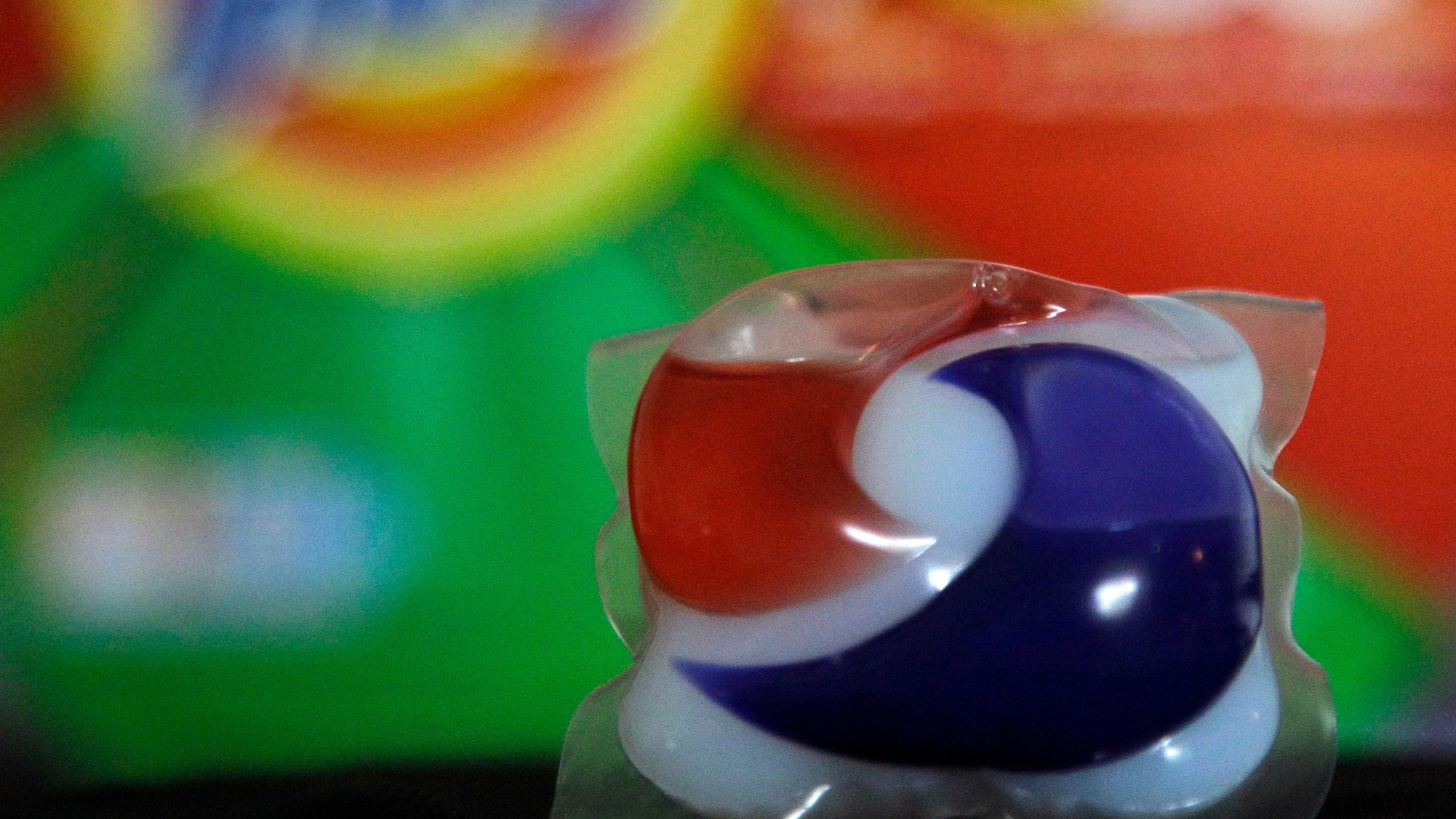Laundry detergent’s latest innovation is a safety hazard for kids
Since their introduction in the US in 2012, squishy, single-serving laundry detergent “pods” have become a consumer favorite, thanks to their convenience (no scooping, no pouring, no measuring). But the capsules are also a poison hazard to young children who chew on and ingest the capsules, according to a study published online Monday in the journal Pediatrics.


Since their introduction in the US in 2012, squishy, single-serving laundry detergent “pods” have become a consumer favorite, thanks to their convenience (no scooping, no pouring, no measuring). But the capsules are also a poison hazard to young children who chew on and ingest the capsules, according to a study published online Monday in the journal Pediatrics.
Over 17,000 cases of detergent exposure to children younger than six were reported to US poison control centers from March 2012 through the end of 2013, according to the study, which used data collected by America’s National Poison Data System. In 80% of these cases, children ingested the packets, which are often colorful and could be mistaken for candy or teething toys.
Around 750 children were hospitalized from the exposure, and at least one child died.
This study comes after warnings from the US Center for Disease Control and Prevention in 2012 that the pods were “an emerging public health hazard in the United States” and that exposure could result in vomiting, drowsiness, and coughing.
Such warnings did little to quell the popularity of the products. In 2013 consumers spent $525 million in on two of the top brands, Tide Pods and All Mighty Pacs, a 55% increase from 2012, The New York Times reported. There are at least 10 brands of similar packets.
The candy-like pods have been a boon for detergent manufacturers like Procter & Gamble, whose Tide brand controlled 75% of the market for the pods in 2013, according to the company. Consumers have forked over hefty premiums for the pre-measured product: The Wall Street Journal reported that the capsules cost about 25 cents a load for Tide Pods, versus 20 cents a load for liquid Tide detergent. P&G has gained market share with its pod-heavy strategy, at the expense of detergent competitors still focused on more affordable (and safer) liquids and powders.
That means parents who go back to the old-fashioned scoop might actually be helping the soap industry, their pocketbooks, and most importantly, their kids.